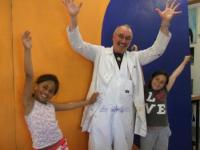Learning outcomes
Title: Turangawaewae
Year Level: 1, 2, 3 and 4
Main Curriculum area: Social Sciences
Understandings about
The physical, historical and cultural relationships influence our environment
How our actions affect the ability of people and nature to sustain a healthy life
Our inter-relatedness (whanaungatanga) with all living things
Related values/attitudes/issues
Guardianship, kaitiakitanga, co-operation and concern for all forms of life in our community and wider environment.
Key concepts (big ideas)
How can we be creative about how we care for each other and enhance our communities
Everything is connected – inter-relatedness, whanaungatanga, whakapapa
Natural systems sustain life in a dynamic balance
We have a past and a future – our choices and actions make a difference
Kaitiakitanga – respecting all that is around us
We are part of a community.
Curriculum area outcomes. Main Learning Area:
Level 1
Students will demonstrate knowledge and understandings of:
why particular places are important for people;
Students could demonstrate such knowledge and understandings when they:
- identify a place that is important and explain why it is important;
- describe activities that happen at particular places;
- describe the natural and cultural features of a place that are important to people.
how and why people record the important features of places and environments.
Students could demonstrate such knowledge and understandings when they:
- describe ways in which people can record features of places and environments (e.g., mapping, tape recording, photography);
- identify people who use descriptions of places and environments (e.g., bus drivers, holidaymakers);
- describe how these people make use of different types of descriptions of places and environments (e.g., maps for directions, pictures for postcards).
Level 2
Students will demonstrate knowledge and understandings of:
how people's activities influence places and the environment and are influenced by them;
Students could demonstrate such knowledge and understandings when they:
- give examples of ways people's activities (e.g., sports, farming, communications, defence) are influenced by the location and physical features of a place;
- describe how people's activities can have a damaging effect on natural or cultural features of the environment;
- describe how people can restore or enhance natural or cultural features of the environment.
how and why people describe places and environments in different ways.
Students could demonstrate such knowledge and understandings when they:
- explain what place names reveal about places and environments;
- explain why people record descriptions of places and environments in different ways (e.g., through pictures, sound and video recordings, maps);
- explain why people choose to record particular features of places and environments


